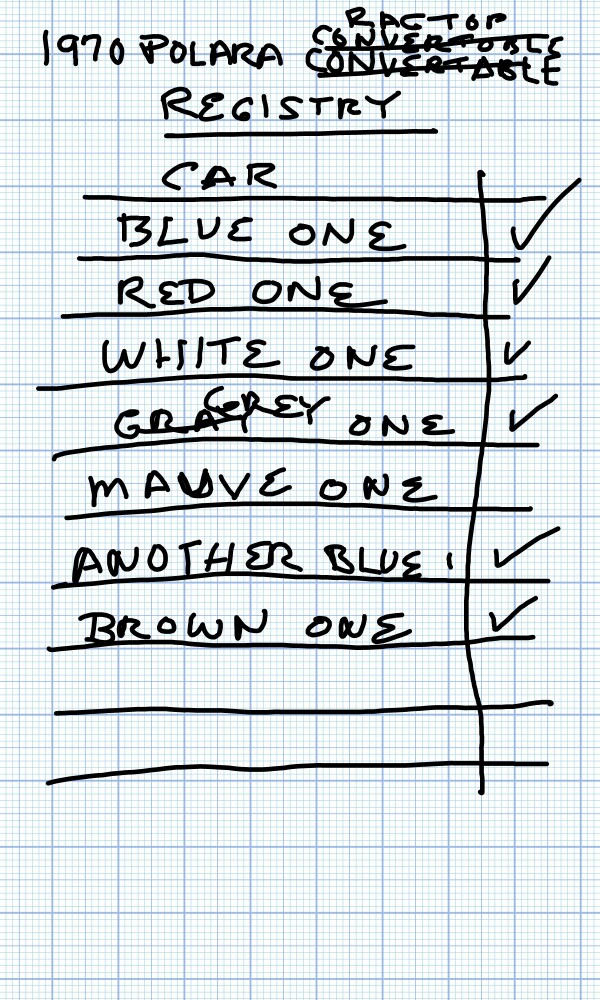This is why I'm on FCBO every day!!!!
Too funny!!!
Thanks Team!!!!
Too funny!!!
Thanks Team!!!!

Dave: whose car is the cream (Y3?) 'vert?
I have a question that I need answered and hopefully the numbers guys will get in here... Where are the Y codes? I have noticed some have Y codes and some do not....WHY?
Here is what else I can tell you that you may or may not know.
The generally accepted number of 1970 convertibles built is 842 ... 79 were built with a 440....It is said that 45 of the roughly 695 built for the US cars were painted burnt orange, FK5..... 164 of those 695 had bucket seats
over the last 35 years I have located over 100 cars, many beyond repair but they still keep creeping out of the "woodwork" at a rate these days of about three a year. Yours has been added to the list and of course, I am envious of yours
Y codes generally refer to something related to the factory's vision of the end use or destination of the car.No, Y codes are on some and not others but I cant figure it out. Same plant, even same body line. Y05, Y14, Y16, Y93 ... I have tags with these Y codes and some with none at all
No, Y codes are on some and not others but I cant figure it out. Same plant, even same body line. Y05, Y14, Y16, Y93 ... I have tags with these Y codes and some with none at all
Remember Rule #1 about fender tags. What goes on the tag is the perogative of the guy operating the machine that makes them. Some guys are intent on listing everything they can (which is why some cars have 2 tags), some plants, mainly Lynch Road had entirely different ideas about what was "important" and needed to be on the tag. Some guys might be new on the job and it takes them longer to enter info for a tag until they get used to the machine and the line speed, so those tags might have less on them.
Remember Rule #1 about fender tags. What goes on the tag is the perogative of the guy operating the machine that makes them. Some guys are intent on listing everything they can (which is why some cars have 2 tags), some plants, mainly Lynch Road had entirely different ideas about what was "important" and needed to be on the tag. Some guys might be new on the job and it takes them longer to enter info for a tag until they get used to the machine and the line speed, so those tags might have less on them.
That I believe , at least on 70 / 71 cars since those are the ones I follow.Because each plant handled things differently, the following is a generalization.
The intent of the tag is to be a portable, durable indication of driveline, paint, trim, and in general, what brackets need to be attached or holes need to be punched in the BIW.
HOW this was accomplished varies by year and plant. How this was executed varied during the year. What was coded, when it was coded and even where it was coded on a tag changes.
Cars generally have two tags because of the amount of items that follow the general guidelines. When you have three codes for external mirrors and two codes for exhaust, a tag fills up quickly meaning a second tag is needed to accommodate all the necessary codes.
In no way shape or form was it up to anyone’s individual prerogative what was included on a tag. Each plant had guidelines.
 Michel} with interest...
Michel} with interest...


Because each plant handled things differently, the following is a generalization.
The intent of the tag is to be a portable, durable indication of driveline, paint, trim, and in general, what brackets need to be attached or holes need to be punched in the BIW.
HOW this was accomplished varies by year and plant. How this was executed varied during the year. What was coded, when it was coded and even where it was coded on a tag changes.
Cars generally have two tags because of the amount of items that follow the general guidelines. When you have three codes for external mirrors and two codes for exhaust, a tag fills up quickly meaning a second tag is needed to accommodate all the necessary codes.
In no way shape or form was it up to anyone’s individual prerogative what was included on a tag. Each plant had guidelines.[/QUOTE
I'm going by what I was told from the plant people I talked to. I'm not saying there weren't documents that specify guidelines, but I've never seen any. Do you have any?
